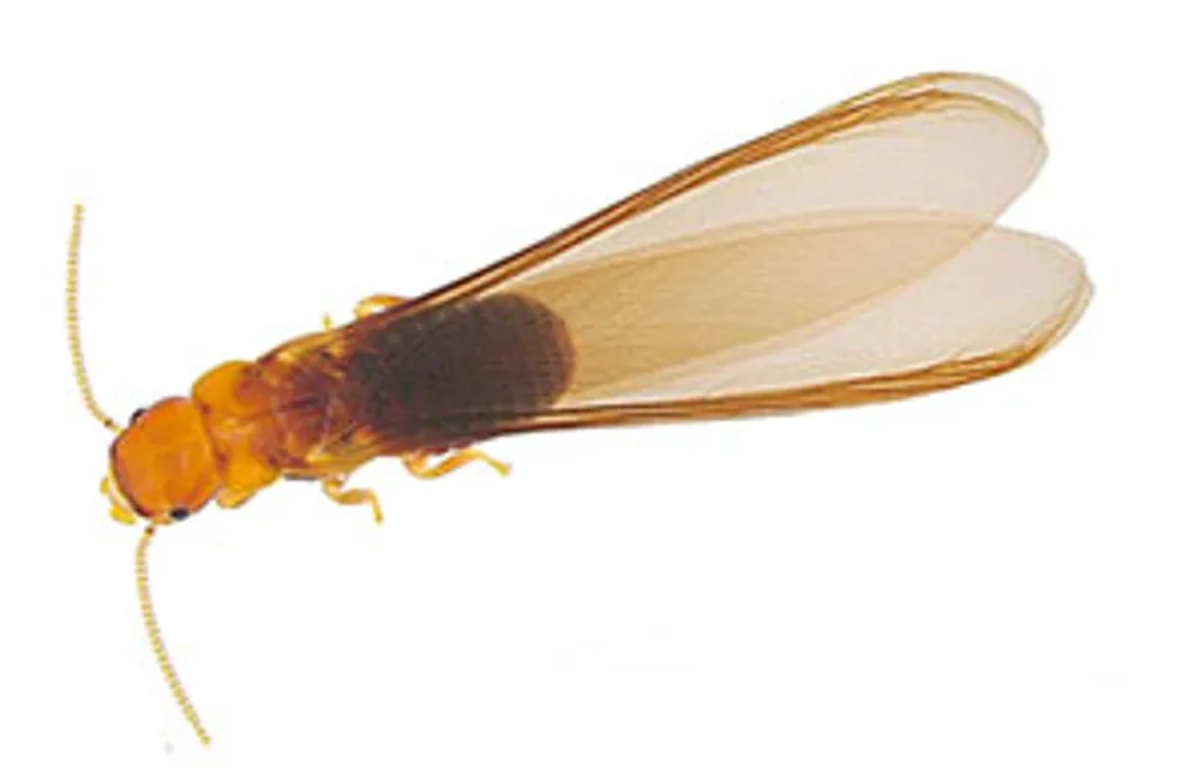Termite Identification
Drywood Termites
Treatment Methods For Drywood Termites:
- Drywood Termite Fumigation
- Local Drywood Termite Treatments
- Drywood Termite Repair Work
Drywood Termite Identification:
Drywood termite colonies can contain thousands of termites. They prefer dry wood with low moisture and can be found in wooden studs, furniture, picture frames, and other furniture made from timber. Drywood termite treatments can include termite fumigation or local treatment methods depending on the level of infestation.
There are three stages of drywood termites: eggs, immature, and adult termites.
Local or fumigation treatments for drywood termites can help save you thousands of dollars in damage to your home and furnishings. Call today for a free termite inspection so that we can help rid your home of termites. Fumigation for termites generally comes with a two–year warranty. Local drywood termite treatment generally comes with a one–year warranty.
Subterranean Termites
Treatment Methods For Subterranean Termites:
- Subterranean Termite Local Treatment
- Subterranean Termite Fumigation
- Subterranean Termite Repair
Subterranean Termite Identification:
Subterranean termites can form large nests or colonies consisting of very different-looking individuals (castes).
THE REPRODUCTIVE (WINGED) caste of subterranean termites is dark brown to brownish black, with brownish gray wings. Reproductive termites can typically be seen swarming in spring and fall when rain is followed by bright sunshine.
THE SOLDIER caste is wingless with white bodies and pale yellow heads that are narrow in shape and have no eyes. This caste’s most distinctive characteristic is its mandibles or pincers located in the front of the head.
THE WORKER caste is slightly smaller than the reproductive caste which is also wingless and similar in color to that of the soldier caste.
Subterranean Termite Behavior
Subterranean termites are the most destructive termite species.
Subterranean termites require moist environments at all times to survive. To satisfy this need, they normally nest underground where they build tunnels to reach the surface and continue their journey through mud tubes which are constructed from dirt, wood particles, and even drywall material until they reach the surface where they search for a desired food source. The most common area to find subterranean termites is in raised foundation structures but they are also aggressive enough to attack through slab cracks and plumbing crevices. Because they require some source of moisture to survive, they are often found in wood that is infected with dry rot or areas that receive extreme moisture. The Western Subterranean Termite is the most destructive termite found in California.
These termites help to recycle forested areas in nature because they break down the cellulose into nutrients for their bodies. However, this same action can cause damage to areas where cellulose–based and wood products are used for construction materials. The damage that is caused can and will lead to both cosmetic and structural damage which translates into unwanted repair costs, weakening of the structure, and a higher rate for extreme fire damage. Billions of dollars are spent each year repairing the damage done to buildings by these insects. Therefore, monitoring your property with yearly wood-destroying pest and organism inspections is key in termite prevention and protecting your home or building from dry rot damage which ultimately creates a safe environment for you, your family, and guests while also saving you significant amounts of money on unwanted repairs.
Contact Gopher Patrol for Termite Control
Fill out a form or text or call Southern California’s Drywood and Subterranean termite exterminators now to schedule an appointment.
Areas we cover:
OTHER Gopher patrol SERVICES
